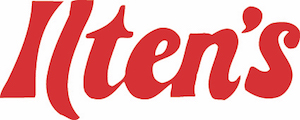
You shouldn’t have to compromise on comfort or spend a lot to keep your residence at a refreshing setting during warm days.
But what is the best setting, exactly? We discuss suggestions from energy specialists so you can choose the best temp for your house.
Here’s what we recommend for the most energy-efficient setting for air conditioning in Cedar Rapids.
Recommended Thermostat Settings for Summer
Most families find placing the thermostat at 72-73 degrees is most comfortable. However, if there’s a huge difference between your indoor and outdoor temperatures, your electricity bills will be bigger.
This is our advice based on the U.S. Department of Energy (DOE) and ENERGY STAR®.
While at home: 78 degrees. While that seems hot, there are methods you can keep your house pleasant without having the AC going all the time.
Keeping windows and window treatments shut during the day keeps cold air where it belongs—inside. Some window solutions, like honeycomb shades or plantation shutters, are made to provide more insulation and improved energy savings.
If you have ceiling fans in your residence, the DOE says you can increase thermostat temperatures about 4 degrees higher without giving up comfort. That’s since they refresh through a windchill effect. As they cool people, not areas, shut them off when you move from a room.
If 78 degrees still seems too uncomfortable on the surface, try conducting a test for a week or so. Start by raising your temperature to 78 degrees while you’re home. Then, steadily turn it down while following the advice above. You may be astonished at how comfortable you feel at a higher temperature setting.
While away: 88 degrees. There’s no need to keep the AC going all day while your house is unoccupied. Turning the temp 7–10 degrees warmer can save you as much as 5–15% on your electricity bills, according to the DOE.
When you arrive home, don’t be tempted to put your thermostat below 78 to cool your residence more quickly. This isn’t effective and often results in a more expensive electricity bill.
A programmable thermostat is a helpful way to keep your temp under control, but you have to set programs. If you don’t use programs, you might forget to move the set temperature when you leave.
If you want a handy remedy, think about installing a smart thermostat. This thermostat connects with your phone, so it realizes when you’re at your residence and when you’re gone. Then it instinctively adjusts temperature settings for the biggest savings. How much exactly? An estimated $180 each year on heating and cooling, according to ENERGY STAR.
Another plus of installing a smart thermostat? You can use your phone to keep an eye on and regulate temperature settings from nearly anywhere.
While sleeping: Around 70 degrees. While ENERGY STAR suggests 82 degrees, that may be unpleasant for the majority of families. Many people sleep better when their bedroom is chilled, so that’s why the National Sleep Foundation suggests 60–67 degrees. But that might be too chilly, based on your PJ and blanket preference.
We recommend following an equivalent test over a week, putting your thermostat higher and steadily decreasing it to select the ideal temperature for your house. On mild nights, you might discover keeping windows open at night and relying on a ceiling fan is a superior option than using the AC.
More Methods to Save Energy This Summer
There are other ways you can conserve money on utility bills throughout warm weather.
- Install an energy-efficient cooling system. Central air conditioners only work for about 12–15 years and become less efficient as they age. A new air conditioner can keep your house comfier while keeping energy bills small.
- Set yearly air conditioner tune-ups. Annual air conditioner maintenance keeps your equipment running smoothly and might help it operate at greater efficiency. It may also help prolong its life span, since it enables techs to discover little troubles before they create a major meltdown.
- Change air filters regularly. Read manufacturer instructions for switching your air filter. A dirty filter can lead to your system short cycling, or switch on and off too often, and increase your cooling.
- Check attic insulation levels. Nearly 90% of homes in the USA don’t have proper insulation, according to the Insulation Institute. Most southern climates require 13–14” of attic insulation, while northern climates should have 16–18”.
- Have your ductwork examined. Ductwork that has come apart over time can seep cold air into your attic, walls or crawl space. This can result in big comfort issues in your house, like hot and cold spots.
- Seal cracks, doors and windows. Keep humid air where it belongs by sealing openings. You can also caulk or weather strip doors to seal more cool air within your home.
Conserve More Energy During Warm Weather with Ilten's
If you want to use less energy this summer, our Ilten's experts can provide assistance. Reach us at 319-208-2351 or contact us online for extra details about our energy-saving cooling products.
